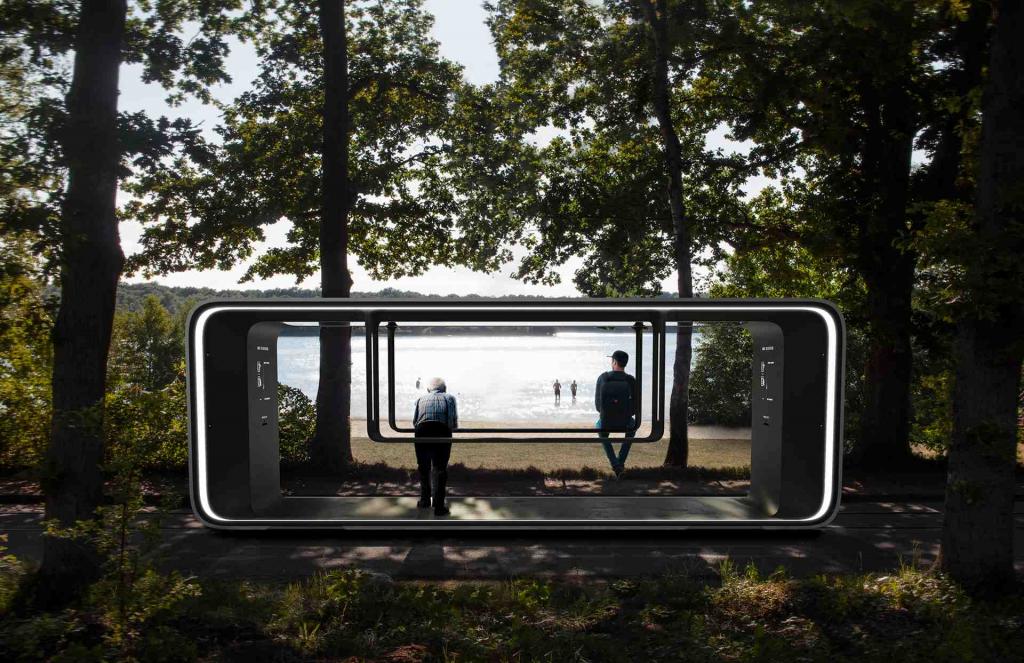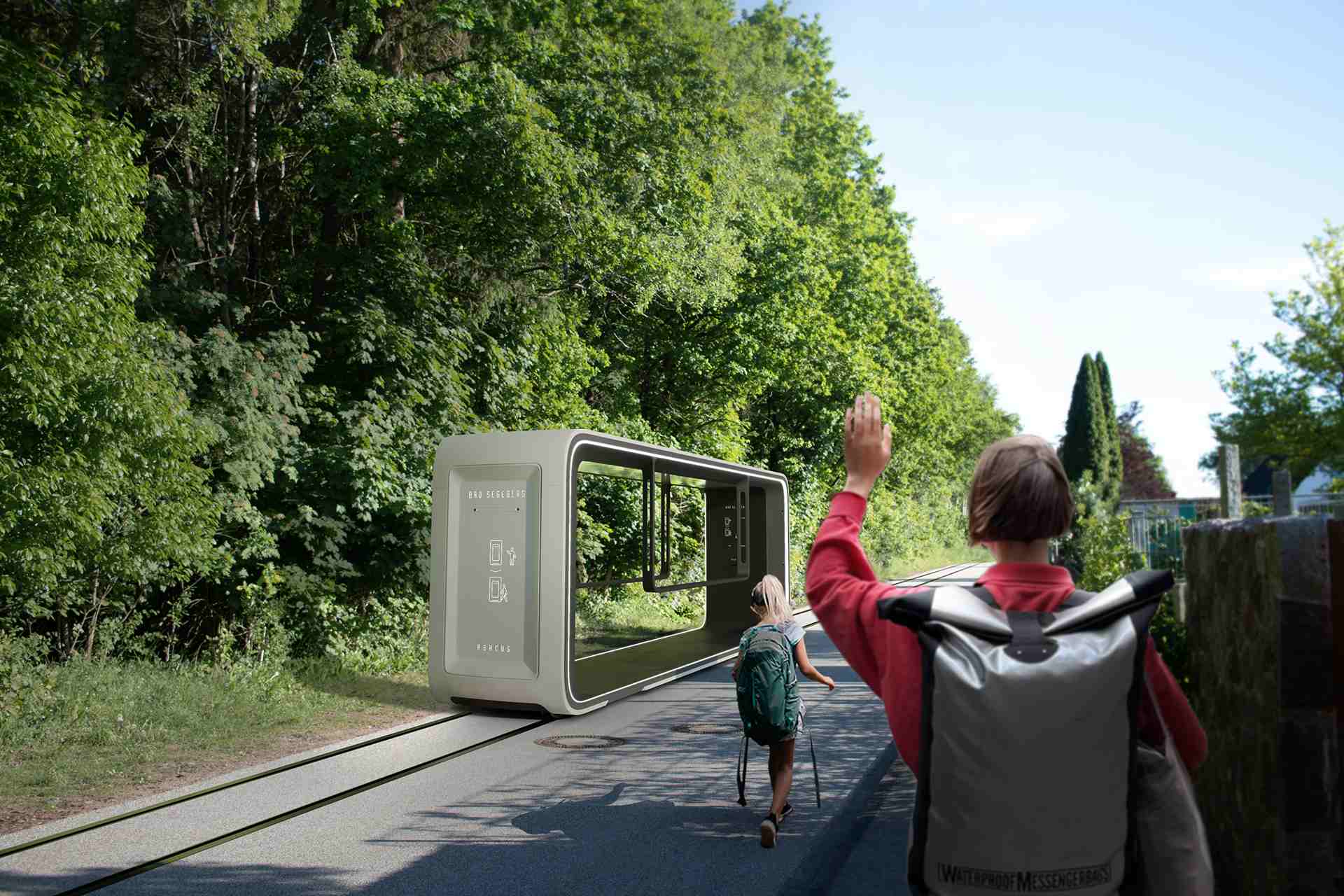Thessaloniki gets ready for its metro launch in November
The underground rapid transit lines have been under construction for almost two decades due to various project delays
 TheMayor.EU logo
TheMayor.EU logo 
The Abacus will feature two large windows to observe the picturesque German countryside, Source: Mantz-Hansen
The team that designed the concept is trying to solve the issue of cars as the primary mode of transportation in rural areas
Last week, the Danish architecture magazine Dezeen published some of the finalists for their Future Mobility Competition. One of the most exciting projects on the list is Abacus, from Germany, centred around the idea of bringing cutting-edge mobility solutions to the rural parts of the country specifically.
Abacus is a rail vehicle that aims to take advantage of disused railroads and help reconnect low-density communities with cities. The team’s design concept also features a multi-stop point system, meaning that people walking along the route can stop the Abacus and get on or off at any point.
The Abacus was designed by Lea Haats, Erik Mantz-Hansen and Konstantin Wolf while partnering with the Society of Energy and Climate Protection Schleswig-Holstein. According to the design team, Germany’s federal state of Schleswig-Holstein is the prime candidate to test the concept as it has seen a rapid decline in rail infrastructure in favour of roads.
As the team explained in a statement, rural mobility seems to be the hardest to tackle due to the preponderance of cars. There are multiple reasons for that, all centred on the low population density which makes running large trains and convenient bus routes economically unviable.
The alternative – smaller rail vehicles that have a lot of stops and run on electricity to reduce emissions and noise pollution.
The Abacus was designed as a hop-on/hop-off vehicle, which passengers can hail just by waving their hands. The signal will be recognised by onboard cameras, which will signal the vehicle to stop. Thus, it will be able to service all the low-density housing spread along its route.
 The sides of the rail track will be left open to ease access,
The sides of the rail track will be left open to ease access,
Source: Mantz-Hansen
The pilot track that the team is aiming for runs from the village of Gross Rönnau to the nearest city of Bad Segeberg, where there is a rail connection to the state capital of Kiel. The route is three kilometres long and would feature special tracks that are supposed to power the Abacus through induction. The reason for introducing the tracks is so that the trams themselves remain light and small.
Furthermore, their unique design features two large windows on either side, which will allow passengers to view the picturesque countryside. In terms of furniture, the Abacus will only have two rails, that can be used either for sitting or leaning.
At the same time, all the technology that makes it run will be positioned on the side frames to keep the device with low ground clearance. This will allow people with motor disabilities to access the tram with ease.

The underground rapid transit lines have been under construction for almost two decades due to various project delays

Now you can get your wine in Talence by paying directly in Bitcoin

That’s because the state has to spend money on updating the railway infrastructure rather than subsidizing the cost of the popular pass

Rethinking renewable energy sources for the urban landscape

The examples, compiled by Beyond Fossil Fuels, can inform and inspire communities and entrepreneurs that still feel trepidation at the prospect of energy transition

Now you can get your wine in Talence by paying directly in Bitcoin

The 10th European Conference on Sustainable Cities and Towns (ESCT) sets the stage for stronger cooperation between the EU, national and local level to fast track Europe's transition to climate neutrality.

At least, that’s the promise made by the mayor of Paris, Anne Hidalgo

The underground rapid transit lines have been under construction for almost two decades due to various project delays

At least, that’s the promise made by the mayor of Paris, Anne Hidalgo

Hostal de Pinós is located in the geographical centre of the autonomous region

Despite its church-y name, the district has long been known as the hangout spot for the artsy crowds

Urban dwellers across the EU are having a say in making their surroundings friendlier to people and the environment.

Forests in the EU can help green the European construction industry and bolster a continent-wide push for architectural improvements.

Apply by 10 November and do your part for the transformation of European public spaces

An interview with the Mayor of a Polish city that seeks to reinvent itself

An interview with the newly elected ICLEI President and Mayor of Malmö

A conversation with the Mayor of Lisbon about the spirit and dimensions of innovation present in the Portuguese capital














